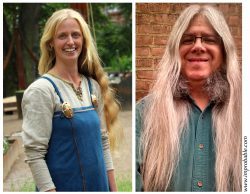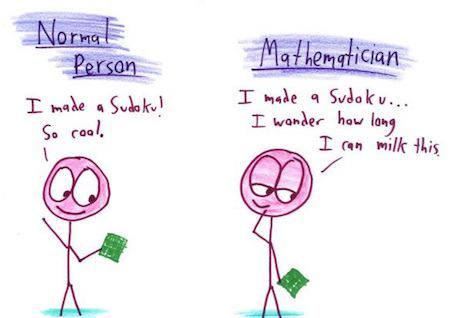Marc Abrahams's Blog, page 224
March 26, 2017
“Ecco il fico” — Barbarossa, the fig, the bite, the thumb, and the mule
The phrase “Ecco il fico” has a particularly ripe meaning, writes Rob Chirico in the Strong Language blog:

Frederick
The year was 1162 when he returned and easily subdued the revolt. According to the chronicler Giambattista Gelli, Frederick [Frederick the First, Holy Roman emperor, also known as “Barbarossa”] got them back for the mule debacle, and then some: “The Emperor, justly incensed, urged the besieged [citizens] to yield, which they at last did… he received them with mercy upon this condition: that every person who desired to live should, with their teeth, take a fig out of the genitals of a [she] mule.” That is to say, Barbarossa gave the ringleaders a choice of being hanged (or beheaded), or saving themselves by presenting a fig to the executioner as a token of ransom. The fly in the ointment, so to speak, was that the fig had been stuck in the ass of the Empress’s ass—er, mule. The prisoner had to extract it with his teeth. He would then bring it to the executioner saying, “Ecco il fico” (translated as “Here is the fig”—but you knew that). If that was not punishment enough, he then had to replace the fig in the mule’s fundament to be ready for extraction by the next miscreant.
Chirico explains this as background for understanding a particular hand gesture:
for decades the incident was used to humiliate and insult the Milanese. You’ve seen it. The precise form is to make a fist with your thumb thrust out between the index and middle fingers and bite the thumb. The exact name of the gesture is known as “making the fig.” It was already a widespread insult in Shakespeare’s time, as he used it in Act I, Scene I of Romeo and Juliet.
The thumb-biting hand gesture has variants, used in various parts of the world.
The Romeo and Juliet incident, which may or may not be quite as described here, is accompanied by this statement: “No, sir, I do not bite my thumb at you, sir, but I bite my thumb, sir.” It can play out in different ways, at the option of the director of the play. This video shows some of the ways:

March 25, 2017
How to cobble a cable in the jungle [historic video]
How do you make an electrical cable when you’re way the hell away from anywhere and don’t have most of the standard equipment? Here’s one way, shown in an American video from World War 2, about cobbling a cable in the jungle, narrated by a narrator who has the voice and manner of a professionally official savvy regular guy:

March 24, 2017
Luxuriant Flowing Hair Club for Scientists™ reveals the identity of its 2017 Woman of the Year
TODAY IN OSLO: In front of an audience at the University of Oslo (UiO), The Luxuriant Hair Club for Scientists (LFHCfS) proudly announced its 2017 Woman of The Year – Dr. Anneleen Kool.

Dr. Anneleen Kool; LFHCfS Woman of the Year, 2017
Dr. Kool was in attendance to discuss her research on the botanical history of the Vikings and to display her luxuriant flowing hair to the audience. She also brought a few of her hair-notable colleagues up on stage and encouraged the audience to join the club, if they have the scientific and hair qualifications.
Dr. Kool studies the plants that Vikings used, how they used them, and how those plants moved through Viking territory. As the Curator of the Viking Botanical Garden in Oslo, Dr. Kool grows many of these plants and displays them for the public.
Her Woman of the Year page includes her original nomination photo (on a camel in Wadi Rum, Jordan), more information about her work, and several more photos of her hair. She has been a member of the club since 2012.
The 2017 Man of The Year – Experimental Physicist Prof. Corvin Covault – was announced in January in Boston, Massachusetts.

A Rare Award
This is only the 5th time that the Luxuriant Flowing Hair Club for Scientists has chosen a Woman and Man of the Year.
Past and Future Members
The Luxuriant Flowing Hair Club for Scientists accepts membership nominations (including its sibling clubs, for scientists who formerly had luxuriant flowing hair, or who have luxuriant facial hair). The clubs currently have over 550 members around the world. New members are announced first in the Improbable Blog, and later collected into annual member galleries.

5 scientists noted for their hair, onstage in Oslo (Dr. Kool, far right)

March 23, 2017
Ear-orientation in humans – a review
 Would you like to be able to move your ears at will? There’s a good chance you already can (using a 25 million-year-old neural circuit). Dr Samuel Alexander Kinnier Wilson [pictured] was the first to formally document the so-called oculoauricular phenomenon in his 1908 paper ‘A note on an associated movement of the eyes and ears in man’ (in Review of Neurology and Psychiatry, 6, 331–336.)
Would you like to be able to move your ears at will? There’s a good chance you already can (using a 25 million-year-old neural circuit). Dr Samuel Alexander Kinnier Wilson [pictured] was the first to formally document the so-called oculoauricular phenomenon in his 1908 paper ‘A note on an associated movement of the eyes and ears in man’ (in Review of Neurology and Psychiatry, 6, 331–336.)
Wilson found that around 40% of experimental subjects were able to move the outer rim of their pinnae, 2-3 mm or so, by purposely shifting their eyes either extreme left or extreme right.*
A review of human pinna-orienting has recently been undertaken by Dr. Steven A Hackley of the Cognitive and Clinical Neuroscience Laboratory, Department of Psychological Sciences, University of Missouri, USA.
“Humans and apes do not move their ears to express emotion, they do not defensively retract them when startled, and they do not point them at novel, salient, or task-relevant stimuli. Nevertheless, it is the thesis of this review that neural circuits for pinna orienting have survived in a purely vestigial state for over 25 million years.”
He also points out that :
“Our ears cannot pivot toward a sound source because the extrinsic muscles are attached too near the base to achieve leverage, because the muscles for controlling pinna position, orientation, and curvature are innately small and weak, and because the ears themselves are rigid and bony. The neuromuscular system for orienting our ears during focused attention is quite useless, a fact that should give pause to those who advocate the teaching of creationism or intelligent design in public schools.”
see: ‘Evidence for a vestigial pinna-orienting system in humans’ in Psychophysiology, Volume 52, Issue 10.
*Why not try this at home?

March 21, 2017
It’s just an incidentaloma
What’s an incidentaloma? “Incidentaloma” is a medical term. These two papers are among the many that try to explain:
“Benign anatomical mistakes: Incidentaloma,”
Mirilas, Petros; Skandalakis, J E., The American Surgeon, 68.11 (Nov 2002): 1026-8.
“Screening using whole-body magnetic resonance imaging scanning: who wants an incidentaloma?”
Rustam Al-Shahi Salman,William N Whiteley, Charles Warlow, J Med Screen, 2007;14:2–4
(Thanks to Dany Adams for bringing the concept of incidentalomas to our attention.)

March 20, 2017
Whatever happened to the punctus? [punctuation studies]
Why is there such a paucity of academic literature on medieval punctuation? Is it (as Reimer, 1998, suggested)
“
[…] partly because there is so much evidence which needs to be studied, and partly because editors of texts have considered the effort needed to be a waste of time”?
For a discussion of the subject, turn to the work of Dr Nadia Obegi Gallardo, a research fellow of the Department of English Philology at the University of Málaga, Spain, who has analysed a hand written text (on vellum) which is archived at Cambridge University Library – MS Ll. 4. 14. (n. 3).
The analyses showed that the most common punctuation marks were:
The punctus (or upper stop) · followed by the double punctus (or colon) : the paragraph mark ¶ and the virgula suspensiva /
See: Punctuation in a fifteenth-century Scientific Treatise (MS Cambridge L1. 4.14) in Linguistica e Filologia, 22, (2006)
Bonus [optional]: Has the time come to revive the use of the punctus? If so, we provide some, like this one · below. Any or all of which can freely be cut-and-pasted into modern-day texts of your choice.
· · · · · · · · · · · · · · · · · · · · · · · · · · ·

March 19, 2017
Ig Nobel Prize Winners at EPFL, in Lausanne, Tuesday night
 Magnetically aligned defecating dogs, non-yawning tortoises, and randomly selected leaders — these things and more will be part of the Ig Nobel show at EPFL.
Magnetically aligned defecating dogs, non-yawning tortoises, and randomly selected leaders — these things and more will be part of the Ig Nobel show at EPFL.
WHEN: Tuesday, 21 March, 2017, 18:00 – 20:00
WHERE: Forum Rolex, EPFL, Lausanne, Switzerland
TICKET INFO and other DETAIL are on the EPFL web site.
The night will feature:
Marc Abrahams — Father of the annual Ig Nobel Prize ceremony and editor of Annals of Improbable Research
Ludwig Huber (University of Vienna) — 2011 Physiology Prize Winner — “Absence of contagious yawning in tortoises”
Alessandro Pluchino (Università di Catania) — 2010 Management Prize Winner — “Organizations would become more efficient if they promoted people at random”
Hynek Burda (University of Duisburg-Essen and Czech University of Life Sciences in Prague) — 2014 Biology Prize Winner — “Defecating dogs align their body axis with Earth’s north-south geomagnetic field lines”
Several hundred other Ig Nobel Prize winners will also be present in the room — the 2008 Ig Nobel Peace Prize was awarded to all the citizens of Switzerland, for adopting the legal principle that plants have dignity.
This event is part of the Ig Nobel Spring Eurotour, which visited England last week, and will arrive eventually in Norway, Sweden, Austria, Italy, The Netherlands, and Scotland.

Some — but only some — say never pre-sieve the sediment
 “Many archaeobotanists say never pre-sieve the sediment sample, since they think sieving may break up the charred material. I think it can be equally bad to let large rocks and sherds bang around in the flotation tank.”
“Many archaeobotanists say never pre-sieve the sediment sample, since they think sieving may break up the charred material. I think it can be equally bad to let large rocks and sherds bang around in the flotation tank.”
—So writes Naomi F. Miller [pictured here] in “Recovering Macroremains by Manual Flotation and Sieving.”

March 18, 2017
Coffee and Cancer: A Bad News Burp for Modern Science Journalism
 A newly published study is bad news for news organizations — it’s a burp in the stream of guaranteed-attention-getting medical reports that suggest coffee-drinking might cause cancer. The study is:
A newly published study is bad news for news organizations — it’s a burp in the stream of guaranteed-attention-getting medical reports that suggest coffee-drinking might cause cancer. The study is:
“Coffee and Cancer Risk: A Summary Overview,” Gianfranco Alicandro [pictured here], Alessandra Tavani, and Carlo La Vecchia, European Journal of Cancer Prevention, epub March 2017. The authors, at the University of Milan, report:
“We reviewed available evidence on coffee drinking and the risk of all cancers and selected cancers updated to May 2016. Coffee consumption is not associated with overall cancer risk.”

The trick of making Sudoku games
The MathWithBadDrawings blog looks at how complicated — or, rather simple — it is to create lots and lots of sudoku games:
“Now, I’m not much of a Sudoku player. (Crossword guy, to be honest.) But glancing at the puzzle, my dad and I got to wondering: How do they generate these puzzles? We weren’t sure. So we found a more tractable question: What if you were a lazy Sudoku maker?…”
“Well, let’s start with this: the numbers don’t actually matter. For example, you could switch the 1’s and the 2’s. Nothing really changes. Every row still has a 1 and a 2. So does every column. So does every medium square. The symbols in Sudoku are meaningless. It doesn’t matter what they are—numbers, letters, emoji. It just matters where they are….”

Marc Abrahams's Blog
- Marc Abrahams's profile
- 14 followers




